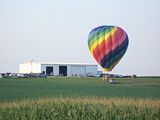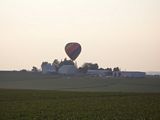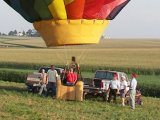2006-8-29 - Farm Progress Show
This afternoon we went down to the Farm Progress Show in Amana, IA. It is only about a 15 mile drive for us. There was a lot of mud. Today is the first day of the three day show. It rained yesterday and it rained a little more this morning. Needless to say, it was muddy. The Iowa DOT was turning away 2wd cars from the parking lots since they were getting stuck. The parking lots are really just grass fields. Earlier in the morning, before the grass had been torn up, some 2wd vehicles made it in, but they couldn't get back out. There was a fleet of Kawasaki Mules, John Deere Gators, and Yamaha Rhinos that were pushing vehicles back to the road.
The fields were also wet. They canceled the field demos for today, and they weren't sure about tomorrow. Prior to the rain, the combine guys had been working on setting the machines. They said one field was 35 percent moisture, and another they only tried was at 47 percent.
The one thing I walked away from today with a ""wow"" impression is the simplicity of the unload auger on the new MF/Gleaner/Cat combine. It is just a straight shot from the hopper out to the end of the auger. No divers helmet or 90 degree angles to force the grain through. I think they said 4.5 bushels per second. On the other hand, it disappoints me to see a belt drive going to the header. When you've got a 16 row chopping corn head on the front of that machine, there is a lot of HP going to the header. Everyone needs to do what they did on the 8010 and just start using a PTO shaft drive.
Another thing that I strongly dislike anymore is the electrical connection for the header height sensors. This new MF/Gleaner/Cat machine has an all-in-one connection for the header, including the electrical. What I see is a connector with spots for probably 30 pins, about 15 of which have connection in them. Now I'm going to have to speculate that the people who thought this was a good idea, either they haven't spent very much time in a combine, or have limited exposure to other industries. I'd like to introduce them to a concept widely known as ""digital"". The more pins you have, the more problem you are going to have with dirt on just one of them, which in turn causes the header to do some really freaky stuff. Maybe it will go up, but not down. Maybe it tips left, but not right. Whatever, this can all be done with just 2 pins. Power, two-way data, heck even the turn signals all on just two conductors. Now this goes for all you combine manufacturers, within your departments, there has to be a group that does the electronics. Ask them if any of them has a model train, and from there, you're looking specifically for a DCC system. Google it, whatever, just use that technology to do all this.
Now why do I say to put all this digital electronic stuff in the way of something even as simple as a turn signal? Well, because I've had dirt on just one of the contacts for the header height sensors. On more than one occasion, I've tried to cut soybeans, but couldn't because one pin didn't get a good contact. That caused the head to keep tipping one direction, and one side starts digging in the dirt. Now imagine that I'm trying to get into a new field, and can't. Now image 6 more combines right behind me still sitting on the road. Now imagine cars and trucks getting upset since the road is being blocked for a few seconds. You get the idea. It's 2006 and we have the technology to work around silly issues like this. I'd like for the computer in the combine to know when there is a header attached. I'd like for the connector between the header and combine to also have a green LED to tell me that it's connected. If that light is on, then both pins are working. Simple really. In addition, this opens you up to a ton of diagnostic possibilities to assist the operator when things aren't quite right.
Alright, on to Deere, Nice shiny new tractors. Whats up with that brown, dried-crap looking, interior color. I'm telling you, the 70s are over, and we lost, bad. Change to gray, tan, black, green racing strips, I don't care, just give me something other than dog crap brown to look at while I'm in the seat.
I saw a nice demo of the orbit reel. I love the simplicity of the design on this one. No complex cams or chains, just a poly guide that a roller follows.
Kinze's big planter is huge. I think it was 36 rows wide, and makes for a long walk around it. Oh, and their 800 bushel cart doesn't look so big when it is sitting on a pole 40 feet above you. Then you realize it's way up above you.
Balzer has a 1800 bushel grain cart, or at least some pictures of it. Thier 1200 bushel cart is there, which actually has power steering. They said you usually just leave that hydraulic line in float though and it just follows along. I don't know how much HP it takes to unload it though, since they claim over 1000 bushels per minute. Brent has a 1500 bushel cart this year too with a very complex steering mechanism. Power steering on that one too. Honestly, I don't yet see the point of grain carts in excess of 1000 bushels. Once you have enough to load a semi, the rest is just more compaction.

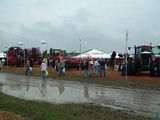
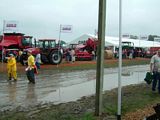
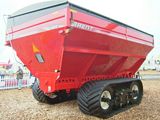
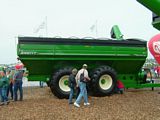
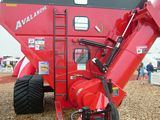
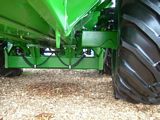
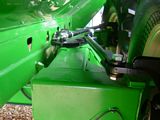
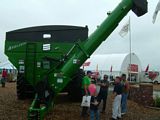
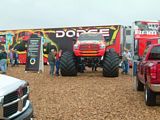
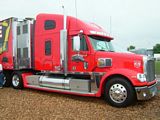
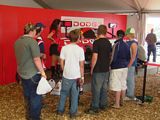
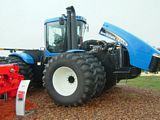
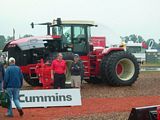
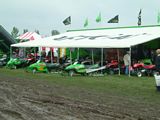
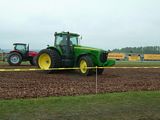
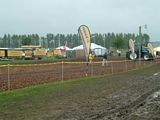
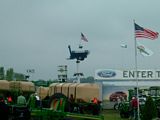
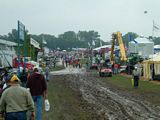
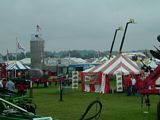
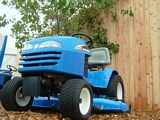
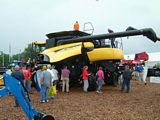

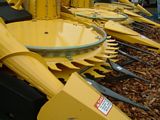
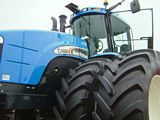
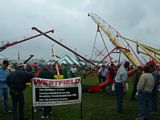
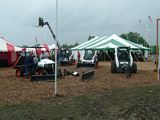
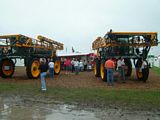
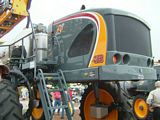
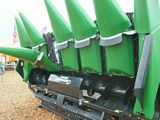

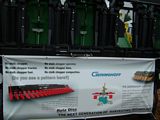
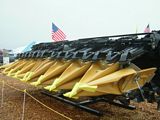
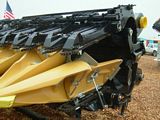
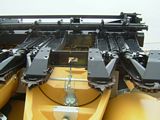
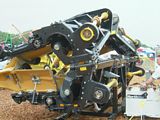
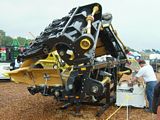
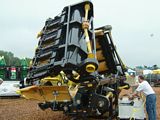
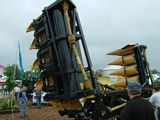
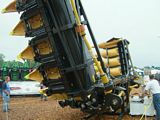
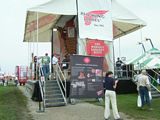
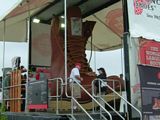
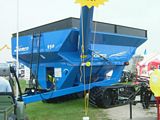
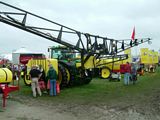
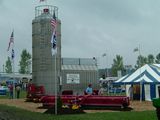
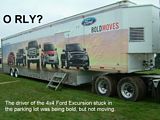
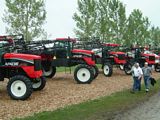


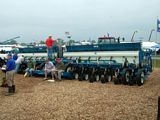
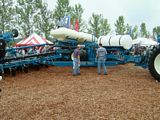
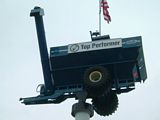
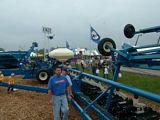
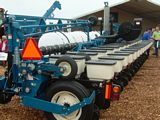
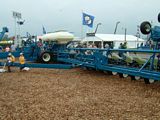
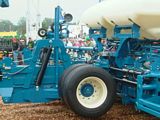
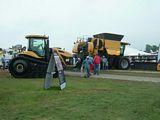
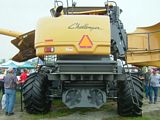
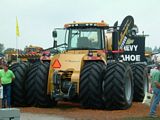
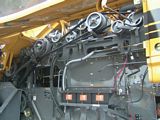
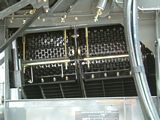
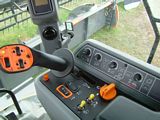
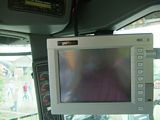
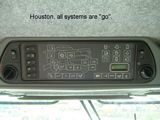
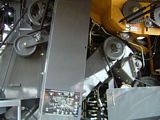
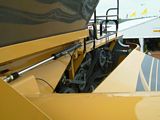
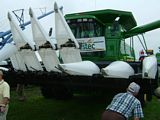
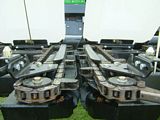
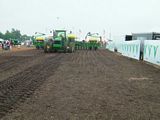
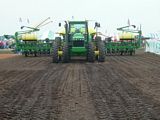
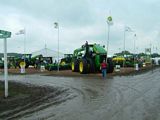
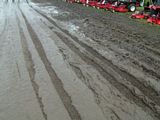
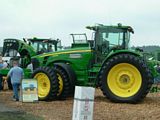
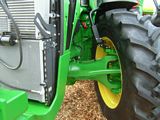
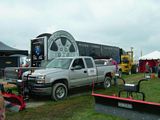
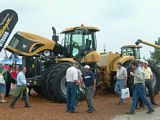

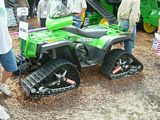
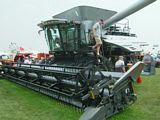
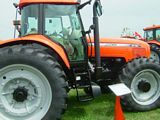
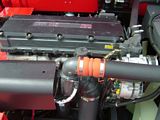
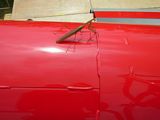
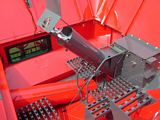
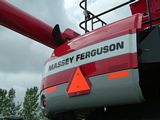
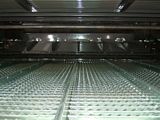
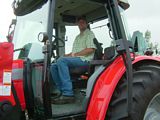

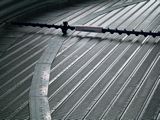
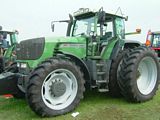
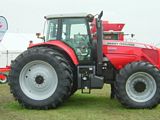
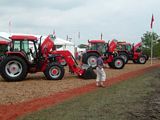
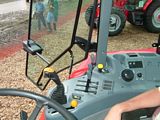
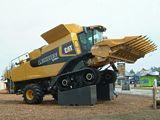
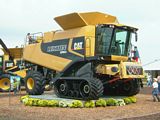
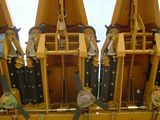
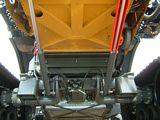
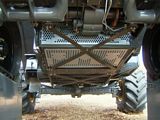
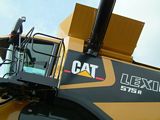
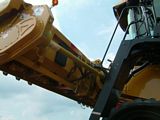
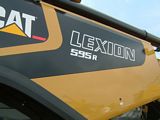
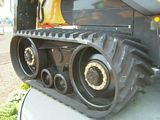
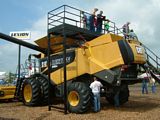
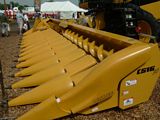
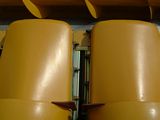

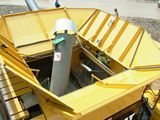
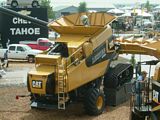
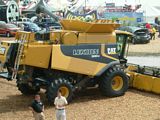
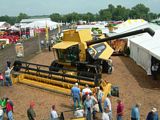
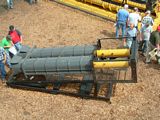
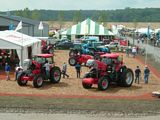
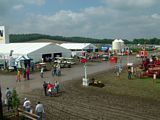
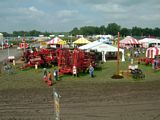
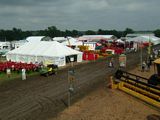
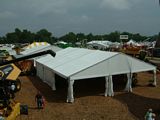
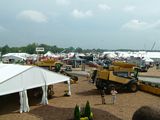
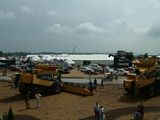
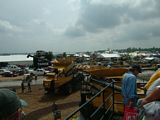
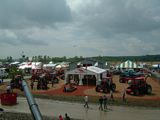
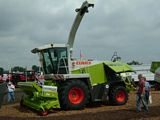
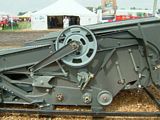
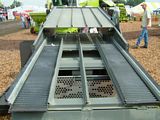
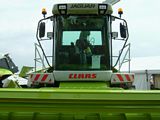
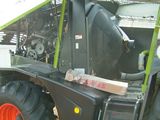
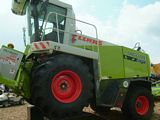

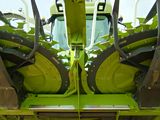
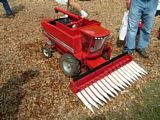
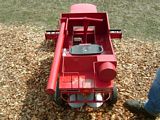
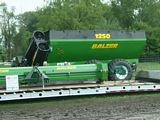

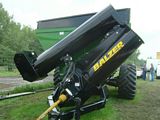
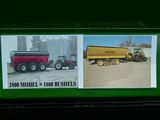
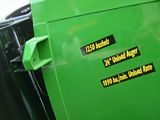
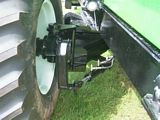
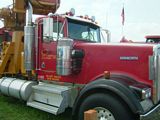
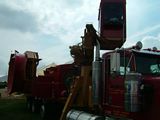
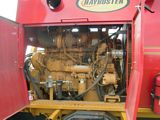
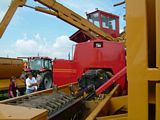
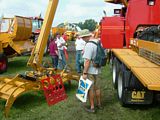
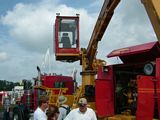
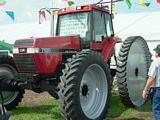
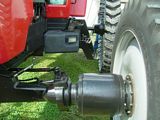
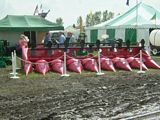
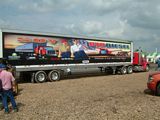
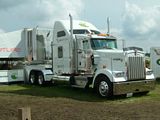
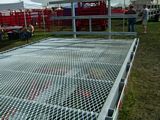
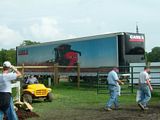
2006-8-29
Loaded 2 trucks with soybeans this morning. Had to clean out two grain bins, and start on a third. The grain vac works really well for cleaning out a bin. Much less dust inside compared to using a conventional sweep auger.
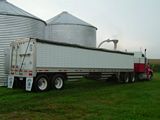

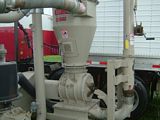
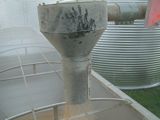
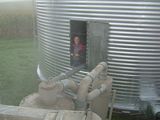
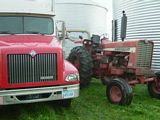
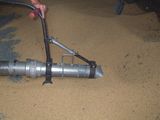
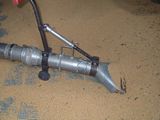
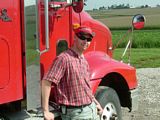
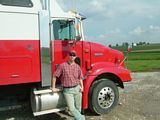
2006-8-27
The lift is at my house to pick apples, trim all the trees, fix up the house, etc. I also took some pictures of the place.
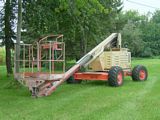
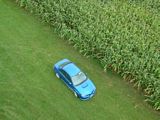
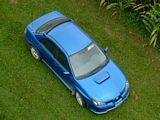

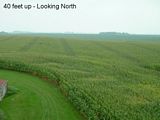
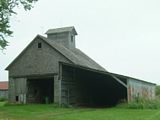

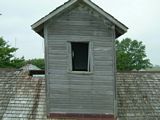
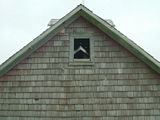

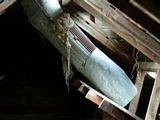
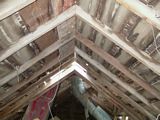
| YouTube Video 360 degree view from 40 feet up |
2006-8-26
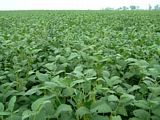

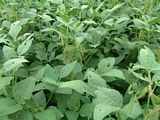
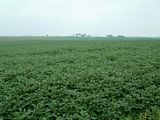
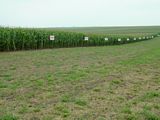
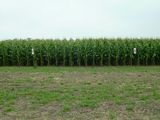
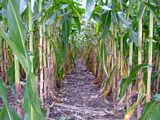
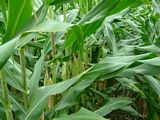
2006-8-25
The cement work is done. Now we have to wait for the steel to arrive, which will be a couple weeks.
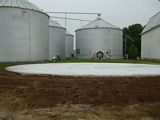
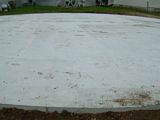
2006-8-22
This size of a bin requires a pretty good foundation and plenty of re-bar to hold the cement together.
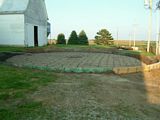
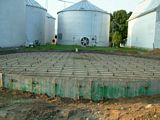
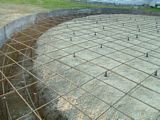
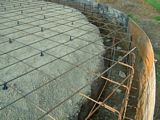
2006-8-19
We're going to build another grain bin for corn. Capacity will be 42,000 bushels.
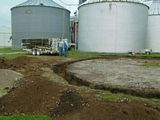
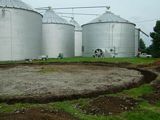
2006-8-16
This isn't our corn, but we do have a 100 acre field that looks about like this. These pictures were taken about 25 miles West of us, along Highway 30. Most of the corn fields within a couple miles of that area show severe wind damage. This stuff is usually a pain to combine too.
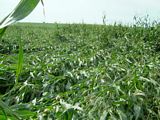
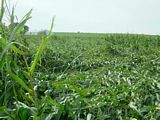
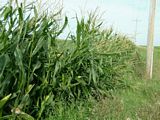
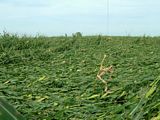
2006-8-12
We aren't really sure what we're going to have for yields this season. In corn, we've got some fields that have ears with only 14 or 16 rows of kernels on each ear, while other fields have up to 22 rows per ear. Some ears have aborted two or three inches at the tip, while others have filled out quite well. We could see average yields anywhere from 140 to 200+ BPA. To add to the fun, a storm earlier this week laid down some of our corn. It isn't completely flat, but we have neighbors with fields that are.
As for soybeans, they are putting on pods and starting to fill them out. We have seen just a little of the white mold. We have a couple small spots where "sudden death syndrome" is showing up. One neighbor has a field with a very large section that is all brown from sudden death. It appears that this will be more of an issue in future years. The insect situation this year is drastically better than previous years. We only have Japanese beetles in a few places, far from the complete coverage we've seen in past years.
2006-8-6
This isn't your typical family reunion. This is 41,000,000 BTUs of fun.
